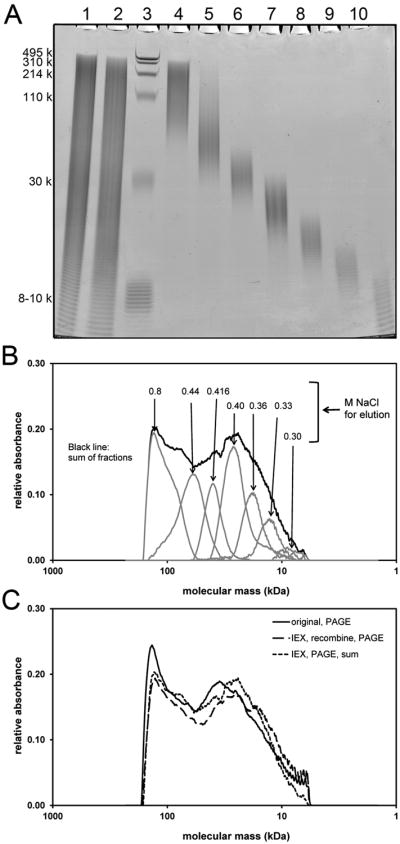Fig 2.

Electrophoretic analysis of a polydisperse HA sample fractionated by stepwise elution from an IEX spin column using seven NaCl solutions of increasing concentration. (A) Fractions on a 4-20% gradient polyacrylamide gel. Lane 1: untreated polydisperse HA, 4 μg. Lane 2: mixture of equal portions of the isolated IEX fractions (“recombine”), 4 μg if no loss occurred. Lane 3: Loladder containing HA molecular mass markers 495, 310, 214, 110, and 30 kDa, in addition to purified 7.6-10 kDa HA. Lanes 4-10: HA eluted with 0.800, 0.440, 0.416, 0.400, 0.360, 0.330 and 0.300 M NaCl solutions, respectively. (B) Densitometric analysis of HA fractions obtained by IEX. Scans correspond to sample lanes 4-10 of the gel. Migration distance is scaled to M by comparison with co-electrophoresed HA standards. Each IEX fraction has low polydispersity, in contrast to the overall high polydispersity of the additive sum of the sample fractions. (C) Densitometric scans of sample lanes 1 and 2 from the stained 4-20% polyacrylamide gel. The profile of the original mixture is highly similar to that of the recombined IEX fractions, and to the additive sum of the individual fraction profiles. The result indicates IEX fractionation of HA causes no overall or size-preferential losses, and maintains the true M distribution.
